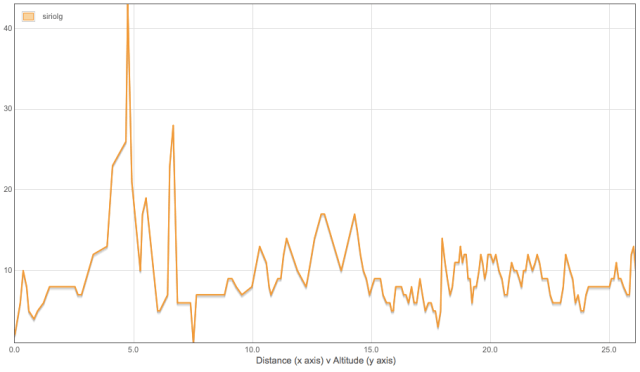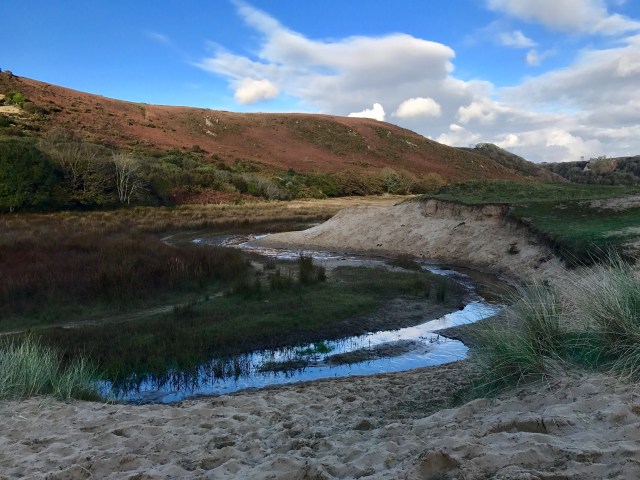
150. Baglan- Rest Bay

Distance: 16.20 miles
Max Altitude: 43 m
Min Altitude: 1 m
Height Gain: 185 m
Height Loss: 177 m
After yesterday, I was well on track to make my end goal, so I woke up sore, shattered but chuffed. I was looking forward to rejoining the coast on the first part of my day’s hike.
Aberafan is a beautiful stretch of coastline with soft sand and decent surf.
Public art adorns the promenade every few metres.
Once again I was grateful for the flat and even surface; nothing short of a godsend for my battered feet.
But all good things must come to an end, they say.
And the beach at Aberafan Sands was no exception.
From here on out, I would be hiking through and around one of South Wales’ most famous industrial landscapes – Port Talbot.
I walked with curiosity. Some people dislike the urban or industrial sections of the Wales Coast Path, preferring the numerous rugged and wild cliffs and so forth, but not me. One of the unique things about the WCP is its variety. When I’m walking past a factory or power station or even an alleyway, it’s as though the trail gives me the chance to look behind the scenes somehow, and offer a glimpse of something I wouldn’t ordinarily see. And me being a nosey sort, well, I find that pleasing.
Besides, the path was perfectly flat, so I wasn’t complaining. And there were things to study every few metres too.
My map told me that I had to cross this bridge. It had been built in 1903 by the Aberavon Corporation.
However –
A gap had been prized open in the fence and a pensioner rode through on his bike, giving me a smile as he did so. But new waymarks were directing me in the opposite direction, different to my map. So I followed them.
I was being led into Aberafan along the pavement.
Incidentally, calling this location ‘Port Talbot’ is a fairly recent thing. Port Talbot is formed from the merging of several villages, including Baglan, Aberafan and Margam. The name Port Talbot came about as a result of the Talbot family, who were local landowners. The Talbots were patrons of Margam Abbey, and also built Margam Castle. An extensive ironworks was built on their property. And they went on to develop a port and railway system too.
After I crossed the above footbridge I was on the lookout for a waymark. Finally I saw one. But I was being led down narrow lanes that I didn’t feel entirely comfortable walking down.
So I decided to walk through the town in order to try to find some food instead.
I ended up back out on the side of the road with the steelworks right in front of me. How many thousands of times have I driven past on the M4 staring a the smoke stacks I wonder? Not once have I stood beneath this behemoth at ground level though.
Everywhere I looked there were pipes and smoke and metal and grime.
The Wales Coast Path then took me through the village of Margam. By now I was far inland and walking past streets and houses on the pavement. Eventually, I was diverted back towards the coast.
Suddenly, the heavy industry disappeared and I ended up in woodland.
On the other side of the spiked fence was Eglwys Nunydd reservoir, a body of water I’d seen so many times from inside a car while whizzing past. It was created to provide water for the Tata steelworks.
I reached the end of the wooded lane and found myself at a level crossing. Only this was the type of level crossing that I hadn’t seen before. Instead of one or two lines, there were at least ten. I imagine one or two were for passenger trains and the rest for the steelworks.
There were warning and health and safety signs everywhere.
And I got to see the steelworks from the other side.
It was eerily quiet and a little creepy, I don’t mind admitting.
I seemed to be in some sort of defunct railway yard.
Pylons towered above me, their wires buzzing with electricity.
The ground became boggy but a purpose built causeway spared my feet from the sog.
Well, almost.
There was no doubt about where I was. The grime and oil from nearby was more than evident.
Continuing, I wasn’t sure of the way, so ascended a sand dune to see where I was in relation to the steelworks and the coast. That’s when this train graveyard appeared.
So I went exploring.
This is somewhere that I’ll definitely return to in the future. But with a proper camera rather than just a mobile phone.
The Wales Coast Path was heading into the Kenfig National Nature Reserve, one of Wales’ top sand-dune reserves.
The steelworks were now behind me. Unlike Shotton or Pembroke Dock for example, Port Talbot had left me feeling empty. Perhaps it was the weather. A blue sky has the ability to give most things a lift, but here I was under grey skies.
Anyway, I was back next to the sea once more so all was well with the world.
Even better was the dedicated track for walkers.
I reached Sker Point, location of one of Wales’ worst sea tragedies, and one which my mother remembers and has told me about. In 1947, the SS Samtampa was a steamship which ran aground at this location. There were 47 deaths, 39 from the ship and eight from volunteer crew of the Mumbles lifeboat. I had walked past that RNLI station only yesterday.
This sign told me that I was nearing the end of my day. I was next to the Royal Porthcawl links golf course.
It meant that I was coming in to one of my favourite beaches, Rest Bay. The sweet memories of long, hot childhood summers came flooding back. Splashing in the sea, building sand castles, exploring rock pools and then gathering bits and bobs quickly before the tide came in. The tidal range in this neck of the woods is the second highest in the world and comes in like an F1 car. One minute you’re padding about on dry sand, the next you’re up to your neck in saltwater if you’re not careful.
It was getting dark so I was grateful for this special EU-funded boardwalk that guided me in to Rest Bay.
My day finished with me looking out at the sea in wonderment. How on earth had I got here? Had I really walked all this way in order to get to one of my favourite beaches? I could scarcely believe it. It seemed nothing short of surreal.
I was still on course to make it back to Cardiff Bay on the date that I had in my mind. The adventure was almost over.




































































































































































You must be logged in to post a comment.